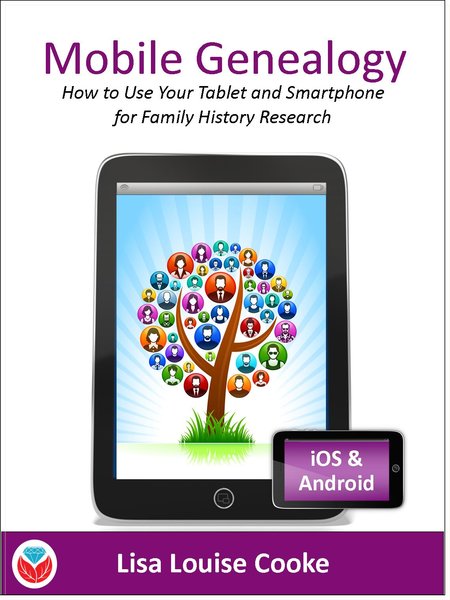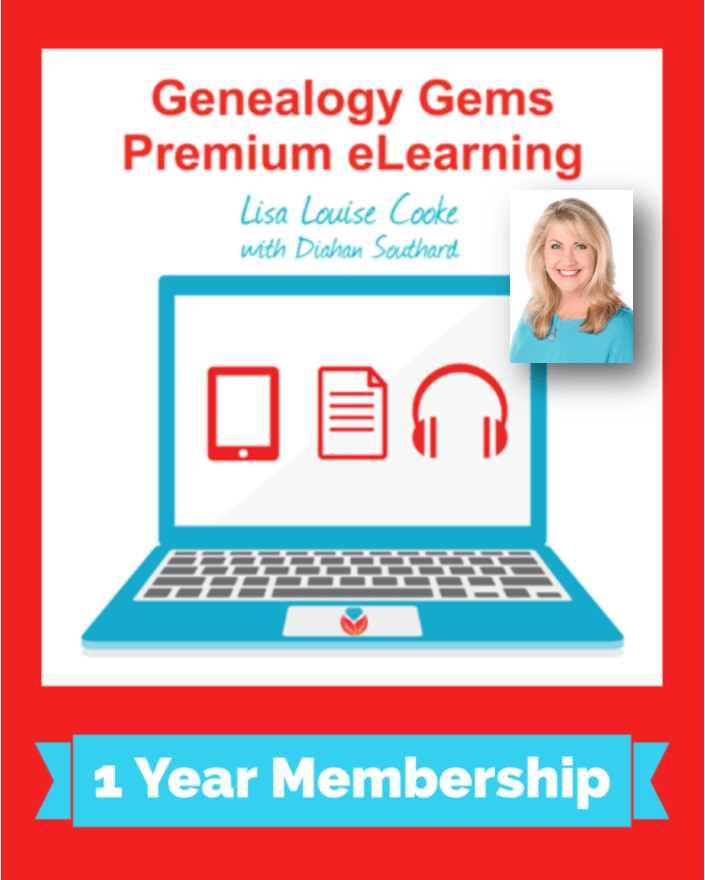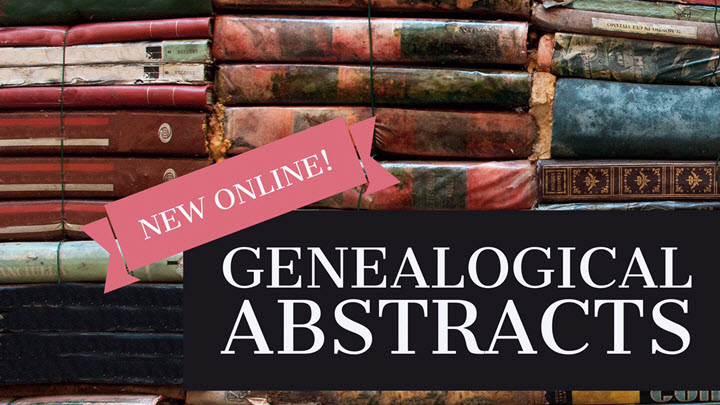by Lisa Cooke | Dec 4, 2013 | 01 What's New, Digital Archives
 I’ve blogged before about the relatively new Digital Public Library of America (here’s a post introducing the DPLA and here’s one on historical maps you’ll find there). Now the Library of Congress has posted a 31-minute webcast that features the DPLA content director, Emily Gore. She not only demonstrates some great examples of what you can find in the public portal of the DPLA, but also discusses the potential for gathering even more materials (she gives an example using local sources.) It’s a great introduction to the site, and Gore answers some questions from the audience that seem to be on a lot of people’s minds.
I’ve blogged before about the relatively new Digital Public Library of America (here’s a post introducing the DPLA and here’s one on historical maps you’ll find there). Now the Library of Congress has posted a 31-minute webcast that features the DPLA content director, Emily Gore. She not only demonstrates some great examples of what you can find in the public portal of the DPLA, but also discusses the potential for gathering even more materials (she gives an example using local sources.) It’s a great introduction to the site, and Gore answers some questions from the audience that seem to be on a lot of people’s minds.
Looking for a more basic intro to the DPLA? Check out this introductory video, too.
by Lisa Cooke | Mar 2, 2016 | 01 What's New, Apps, Mobile, Premium Video
There’s a new video tutorial on genealogy apps for Genealogy Gems Premium website members: “How to Find Essential Genealogy Apps for Genealogists.”
What are the best apps for genealogy? The ones that accomplish whatever you want to GET DONE. Like:
- consulting
- working on your family tree
- translating an old church register
- digitally restoring an old photo.
- Having your mobile device read you an e-book or blog post (yes, you can do this for free).
But to make the most of the many mobile tools out there for the genealogist, you need to strategically look for them rather than hope you stumble across them. Because most of them aren’t conveniently marked “for the genealogist.”
A new 36-minute video tutorial by leading tech genealogy educator Lisa Louise Cooke shows you how to get the most out of your mobile device for genealogy. In “How to Find Essential Genealogy Apps for Genealogists (and 3 to Start Using Right Away)” she covers:
- How to identify mobile-friendly tasks you want to accomplish;
- Apps that every genealogist can enjoy right away;
- Knowing where to look for apps;
- Automating the process of finding apps; and
- How to keep from purchasing apps you don’t need.
Get the Book! 
These tips are taken from hundreds of hours of research and testing Lisa put into her new book Mobile Genealogy: How to Use Your Tablet and Smartphone for Family History Research.
Save 10% off Mobile Genealogy
with Coupon code web10
Premium Membership
 The How to Find Essential Genealogy Apps for Genealogists video is one of nearly 30 full-length video tutorials (and an Evernote mini-series tutorial) that you will have access to as a Genealogy Gems Premium Member. To learn more about membership, click here.)
The How to Find Essential Genealogy Apps for Genealogists video is one of nearly 30 full-length video tutorials (and an Evernote mini-series tutorial) that you will have access to as a Genealogy Gems Premium Member. To learn more about membership, click here.)
More on Genealogy Apps and Mobile Genealogy
How to Use Your Mobile Device for Genealogy: Free Video
3 Tips for Getting the Most Out of Your Mobile Device
Tools to Highlight Your Great Genealogy Finds: Snagit and Skitch
by Lisa Cooke | Oct 27, 2017 | 01 What's New, Records & databases
Explore new Irish Genealogical Abstracts that have become available this week. They are a great alternative to records destroyed in the 1922 Dublin fire! Also new are church and burial records for England, poorhouse records for Scotland, German military recruitment, documents, and colonial letters for Australia. Finally, a variety of exciting collections are now online for the U.S. for Massachusetts, New Mexico, Georgia, and more!

Irish Genealogical Abstracts
New this week at Findmypast are several genealogical abstract collections! First is the Thrift Irish Genealogical Abstracts, created by renowned Irish genealogist Gertrude Thrift. This collection features copies of wills, bill books, parish registers, commission books, and freeman lists, as well as detailed family trees and pedigree charts. Records in this collection date as far back as the 16th century and up to the early 20th century.
Next is the Crossle Irish Genealogical Abstracts collection. Explore the various notebooks of 19th-century genealogists Dr. Francis Crossle and Philip Crossle to reveal a wealth of Irish genealogical resources including copies of records destroyed in the fire at the Public Record Office in Dublin in 1922.
Finally, the Betham Irish Genealogical Abstracts features abstracts and genealogical sketches created by herald Sir William Betham, the Ulster King of Arms. The notebooks are an excellent substitute for missing records and include abstracts of wills, reconstructed family trees, and detailed pedigrees.
Also new for Irish genealogy this week is the Cork, Pobble O’Keefe Census 1830-1852. Search these records to discover who your ancestor was living with as well as their occupation, birth year and marital status.
Findmypast is the leader in genealogical records for Ireland, the UK, and now including U.S. and Canada. Get a two-week free trial of their premium subscription and explore millions of Irish record and more! Click here to subscribe now.
England Parish Records
Extracted Church of England Parish Records, 1538-1837 for Nottingham, England are now available online at Ancestry.com. The records include baptisms/christenings, burials, marriages, tombstone inscriptions, obituaries, tax lists, wills, and other miscellaneous types of records.
Over 75,000 records have been added to Findmypast’s collection of Yorkshire Burials, covering Anglican parishes and municipal cemeteries. Find your ancestor’s name, age at death and burial place, with more than 4 million records covering over 400 years.
Scottish Poorhouse Records
New for Scotland are Kirkcaldy, Fife, Poorhouse Records, 1888-1912. This collection includes records for those who received help from the Abden Home Poor Law Institution, originally named the Kirkcaldy Combination Poorhouse.
German Military Records
 Halle(Saale), Military Recruitment Lists, 1828-1888 are now online at Ancestry.com.
Halle(Saale), Military Recruitment Lists, 1828-1888 are now online at Ancestry.com.
From the collection description: “These recruitment lists are arranged in chronological-alphabetical order and contain detailed information about male military personnel in the city. Typically records for young men begin at age 20. Therefore this collection includes age groupings for men born beginning in 1808 up to and including 1868.”
Australia – New South Wales
At Ancestry.com, you can now explore the New South Wales, Colonial Secretary’s Letters, 1826-1856 collection. If you had ancestors living there during that time period, you can find a wealth of information in this collection, including petitions by convicts for sentence mitigation, marriage permission requests, character memorials for potential settlers, land grant or lease applications, official visit reports, information about court cases, and lists of assigned servants.
United States – Maps & More
Confederate Maps. The Cartographic Branch of the National Archives has announced the digitization of over 100 Confederate maps from Record Group (RG) 109. All are now available to view or download through their online catalog. “These maps can include rough sketches created quickly before or during a battle, but can also include maps that were drawn to accompany official reports or even post-war publications. Many are highly detailed and colorized.”
Massachusetts. At AmericanAncestors.org (the website of the New England Historic Genealogical Society), 12 new volumes have been added to the parish of Immaculate Conception in Salem to Massachusetts collection, Roman Catholic Archdiocese of Boston Records, 1789-1900. This update consists of 23,972 records and roughly 90,300 names.
New Mexico. Bernalillo County, New Mexico, Marriage Index, 1888-2017 are now available online at Ancestry.com. The original records come from Bernalillo County Record’s Office, Albuquerque, New Mexico.
Georgia. From a recent press release: The Digital Library of Georgia (DLG) is celebrating its 1 millionth digitized historic newspaper page. The premier issue of the Georgia Gazette, Georgia’s first newspaper, published from 1763-1776 in Savannah, will become the 1 millionth page of historic newspapers to be made freely available online through the Georgia Historic Newspapers (GHN).
Colorado. Also celebrating a 1 million milestone is the Colorado Historic Newspapers Collection (CHNC), from the Colorado Virtual Library. The millionth page came from the Montrose Daily Press, Volume XII, Number 247, April 21, 1921, which is part of a digitization project supported by Montrose Regional Library District.
Disclosure: This post contains affiliate links and Genealogy Gems will be compensated if you make a purchase after clicking on these links (at no additional cost to you). Thank you for supporting the free Genealogy Gems podcast and blog!
 I’ve blogged before about the relatively new Digital Public Library of America (here’s a post introducing the DPLA and here’s one on historical maps you’ll find there). Now the Library of Congress has posted a 31-minute webcast that features the DPLA content director, Emily Gore. She not only demonstrates some great examples of what you can find in the public portal of the DPLA, but also discusses the potential for gathering even more materials (she gives an example using local sources.) It’s a great introduction to the site, and Gore answers some questions from the audience that seem to be on a lot of people’s minds.
I’ve blogged before about the relatively new Digital Public Library of America (here’s a post introducing the DPLA and here’s one on historical maps you’ll find there). Now the Library of Congress has posted a 31-minute webcast that features the DPLA content director, Emily Gore. She not only demonstrates some great examples of what you can find in the public portal of the DPLA, but also discusses the potential for gathering even more materials (she gives an example using local sources.) It’s a great introduction to the site, and Gore answers some questions from the audience that seem to be on a lot of people’s minds.



 The How to Find Essential Genealogy Apps for Genealogists video is one of nearly 30 full-length video tutorials (and an Evernote mini-series tutorial) that you will have access to as a Genealogy Gems Premium Member. To learn more about membership,
The How to Find Essential Genealogy Apps for Genealogists video is one of nearly 30 full-length video tutorials (and an Evernote mini-series tutorial) that you will have access to as a Genealogy Gems Premium Member. To learn more about membership, 

